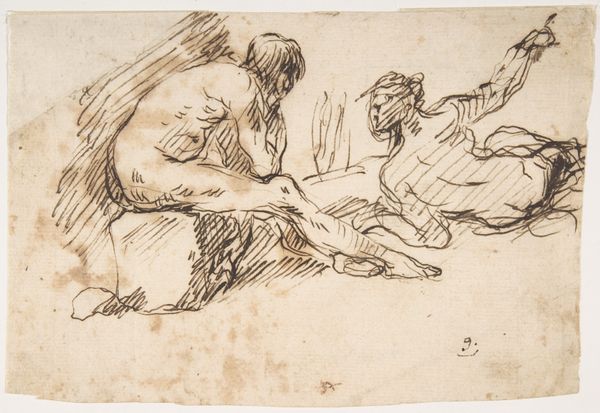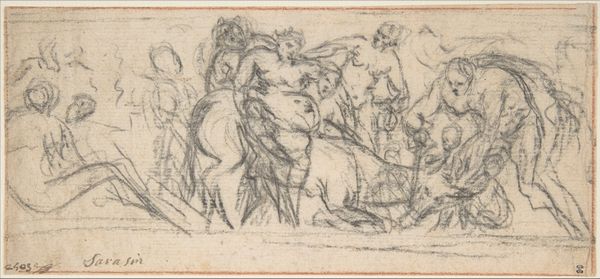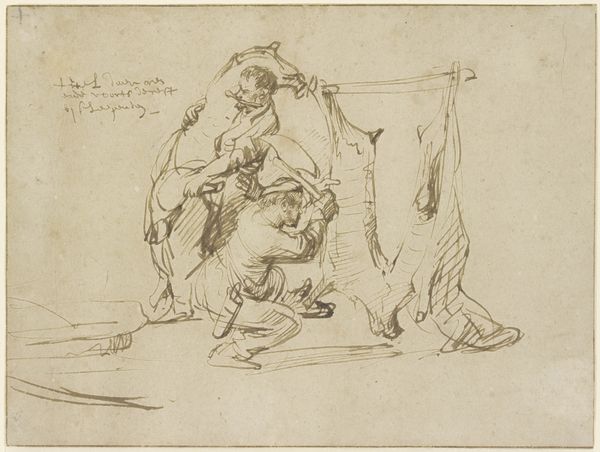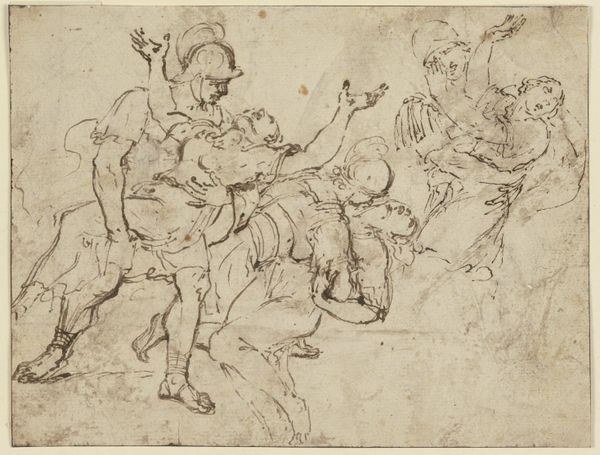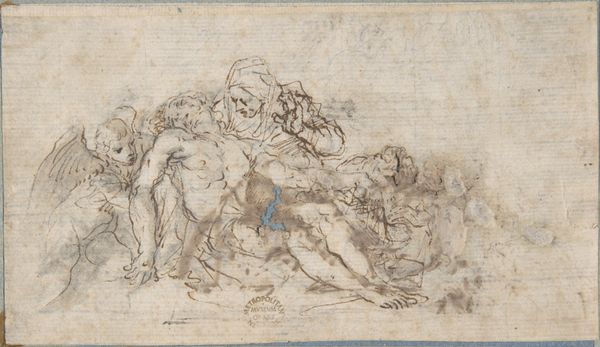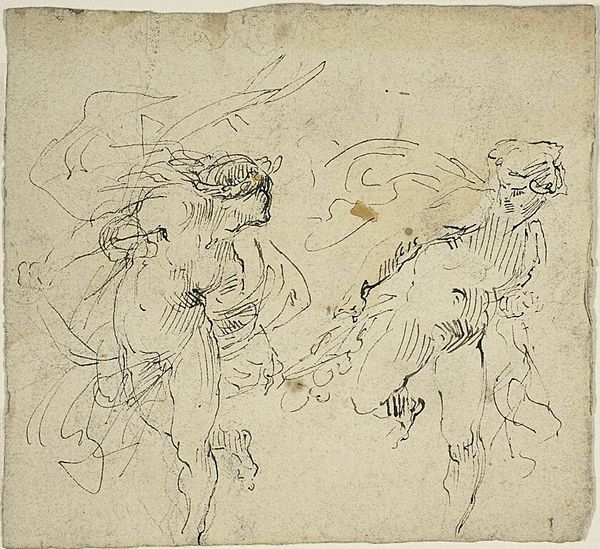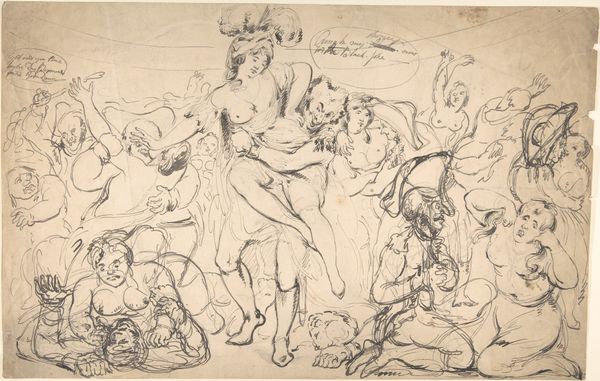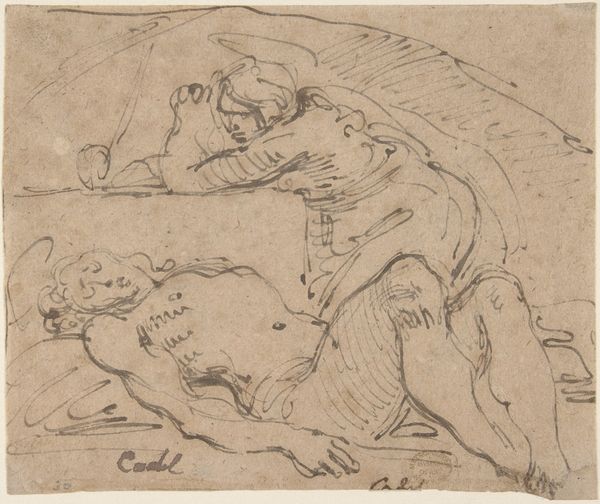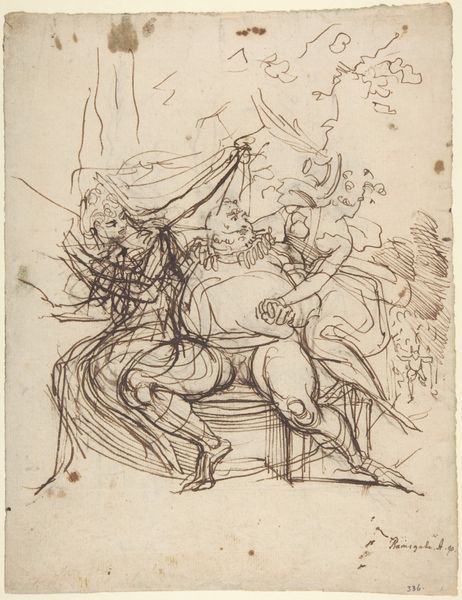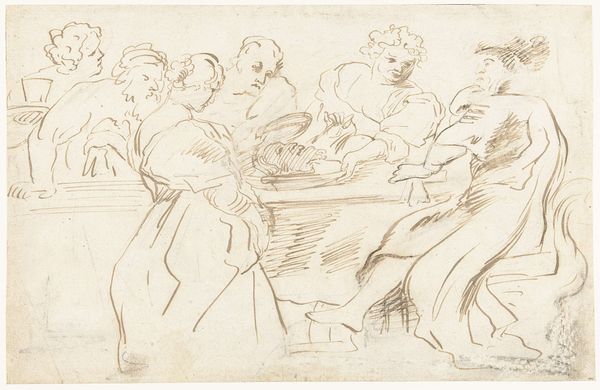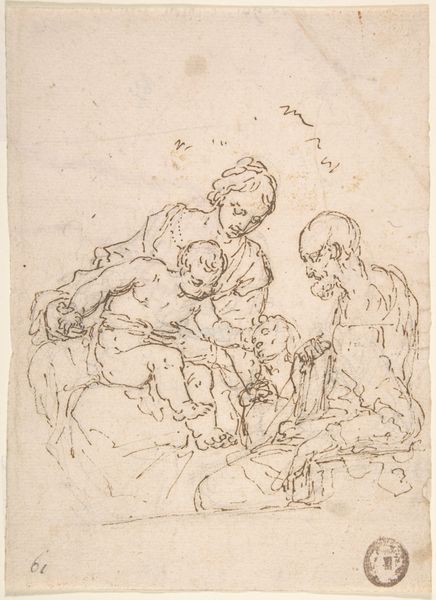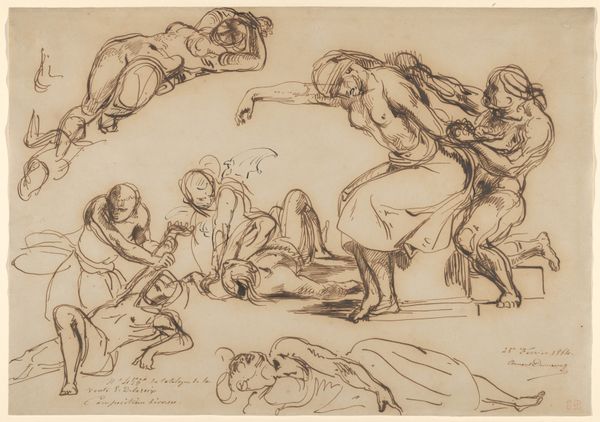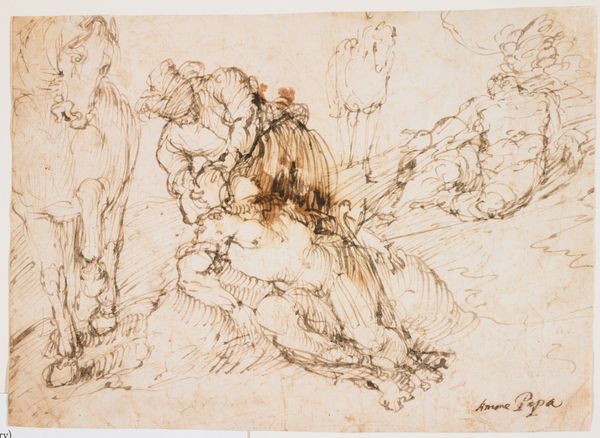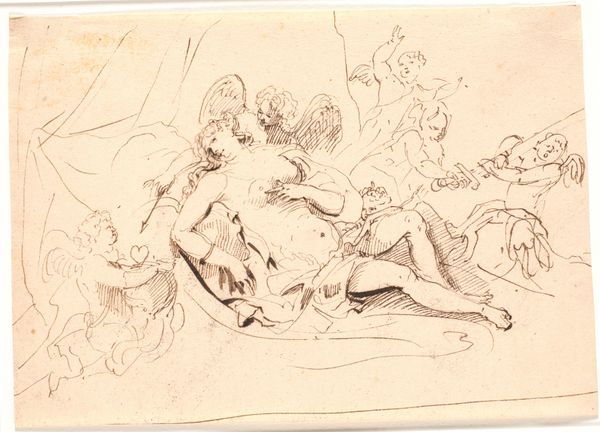
Reclining River God, a Goat's Head, and Studies of Heraldic Emblems (recto); Cavalier Standing on a Globe Supported by a Kneeling Giant (verso) 1612 - 1675
0:00
0:00
drawing, print, ink, pen
#
drawing
#
ink drawing
#
baroque
#
ink painting
# print
#
pen sketch
#
figuration
#
ink
#
men
#
pen
#
history-painting
Dimensions: 7-11/16 x 10-1/2 in. (19.6 x 26.7 cm)
Copyright: Public Domain
Curator: This drawing, dating from somewhere between 1612 and 1675, comes to us from the hand of Micco Spadaro, also known as Domenico Gargiulo. It's entitled "Reclining River God, a Goat's Head, and Studies of Heraldic Emblems (recto); Cavalier Standing on a Globe Supported by a Kneeling Giant (verso)." Editor: Immediately, I'm struck by the dynamism within this pen and ink drawing. There's a wonderful contrast between the loose, almost frantic lines depicting the river god and the more precise heraldic emblems. It's intriguing! Curator: It is, isn't it? Spadaro, working primarily in Naples during the Baroque period, frequently addressed themes of civic identity and governance in his work. He would have likely used studies like this as preparation for his paintings or prints. Editor: I notice the river god's posture: that languid recline seems almost deliberately classical, a formal reference grounding it among all the frenetic energy of the line work, no? And the inclusion of a goat's head feels quite pointed; what’s your read on the iconographic choices, generally? Curator: Baroque Naples experienced frequent shifts in power and periods of both great prosperity and devastating plague. The river god, a classical symbol of abundance and local pride, perhaps reflects an appeal to an idealized past in the face of current instability, and even an uncertain future. The goat might be simply an associated, and more playful symbol with the satyr. It really boils down to status, too; he wasn’t just playing around—a major commission usually included a series of preparatory sketches, and Spadaro knew what would earn him patronage. Editor: So you’re reading this piece as a direct reflection of its sociopolitical moment. I wonder, though, if the sketch-like quality isn't the real key to appreciating its allure. I mean, beyond the symbolic value of its subject, consider the confident variations in line thickness! See how deftly he captures light and shadow. Curator: Perhaps, and those aesthetic concerns definitely held sway, but remember that these drawings were functional. Spadaro may not have considered this ready for display; this was the intellectual process to ground his final work and appeal to authority. Editor: Ultimately, I feel both our points contribute to its enduring power—the fascinating details, coupled with an immediacy that is strikingly vital. Curator: I would agree. Looking at Spadaro's work provides valuable insight into artistic creation and the society that informed it.
Comments
No comments
Be the first to comment and join the conversation on the ultimate creative platform.
